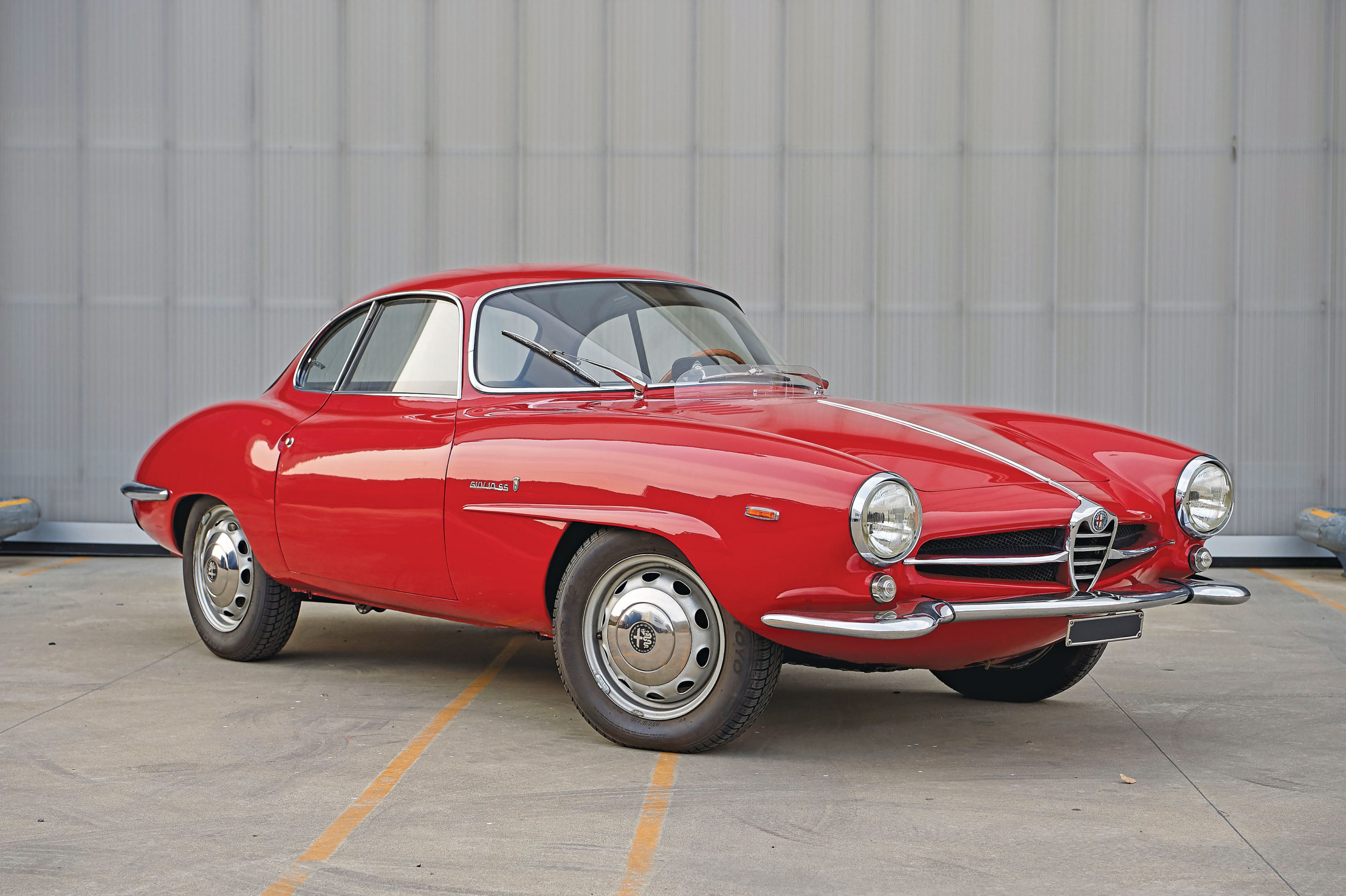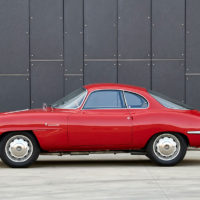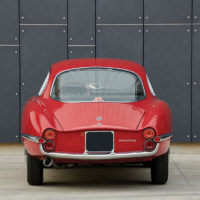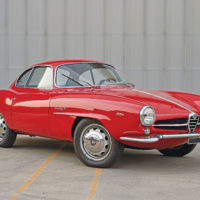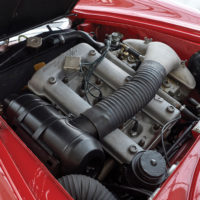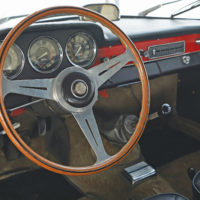SCM Analysis
Detailing
| Vehicle: | 1964 Alfa Romeo Giulia 1600 Sprint Speciale |
| Years Produced: | 1963–66 |
| Number Produced: | 1,400 |
| SCM Valuation: | $89,000 |
| Tune Up Cost: | $500 |
| Chassis Number Location: | Engraved on the firewall, right side |
| Engine Number Location: | Stamped on the right side of the block |
| Club Info: | Alfa Romeo Owners Club |
| Website: | http://www.aroc-usa.org |
| Alternatives: | 1964–65 Porsche 356C SC, 1963–67 Lancia Flavia Sport Zagato, 1963–67 Fiat 1500 GT Coupè Ghia |
| Investment Grade: | B |
This car, Lot 124, sold for $107,962 (€91,300), including buyer’s premium, at RM Sotheby’s Online Only: Open Roads auction on March 25, 2021.
The Sprint Speciale has been a controversial car since it was debuted in 1957. Many people consider it to be one of the masterpieces of Franco Scaglione, the father of the Berlina Aerodinamica Tecnica (BAT) concepts as well as the Alfa Romeo 33 Stradale. Others, however, prefer the simple lines of the normal Giulia Sprint, less stylish but more efficient, even from an aerodynamic perspective.
The first 100 Sprint Speciales were manufactured to meet homologation requirements. These 750 series “low-nose” SS models are in another tier of collectibility entirely, with valuations in the $300k–$400k range. Just under 1,400 Type 101.20 units followed. Named “Giulietta Sprint Speciale,” they used their namesake’s 1,290-cc twin-cam 4-cylinder.
In March 1963, the SS would receive the more-powerful 1,570-cc unit of the Giulia, and thus its name was upgraded too. Another 1,400 of these Type 101.21 models would be produced. After the first 200, the remainder were equipped with front disc brakes.
Save for looking at some of the interior details, such as the passenger’s handle, the dashboard and the instrumentation (or spotting the rear “Giulia” badge), it is impossible at first glance to distinguish the early cars from the later ones. Funnily enough, Giulia SS production came to an end in 1965; however, this date is officially listed as 1966, when a single specimen was assembled.
Driving and owning one
The Giulia SS is a fun car to drive, as the twin-cam 4-cylinder, fitted with dual Weber 40 DCOE2 carburetors, develops a healthy 112 hp. Its sound is addictive, but it is not a rocket, with limited torque from its small displacement. Mated with a 5-speed gearbox, a 120-mph maximum speed can be achieved. It is a perfect classic on the road, as the famous Alfa Romeo roadholding is always rewarding.
Any decent mechanic should be able to fix one, as its mass-produced powertrain represents a simple enough mechanical package. There are plenty of parts still around at decent prices, too.
It’s an entirely different situation with regard to the body panels, the glass and the SS-specific parts (especially the dashboard exclusive to the Giulia SS), which are all almost impossible to find. It is worth mentioning here that the SS is a “handmade” car, and each specimen is slightly different from another. Any used body or trim part coming from another car will definitely need some adjustment to be fitted.
A survivor
Our subject car, chassis AR380895, is still paired with its original engine. Red on black, it was delivered new to Ravenna, sold through the then-official Alfa Romeo (and Renault) dealer Grilli.
This car is clearly not a 100-point concours one, but it is an honest and well-kept example, nicely preserved. It was repainted in the original color some years ago (engine bay included), with still-decent original chrome and interior trimmings. Even if the seat vinyl covers look too new to be 57 years old, this SS sports all the small details and imperfections that only an unrestored car is capable of maintaining. To me this is part of the beauty of an original car, much better than a “brand new” restored one.
Details such as the original dealer sticker on the rear glass (the more-modern one above it should be immediately removed), the original Italian number plate, and small scratches on the alloy sill panel and on the steering wheel, are all good indicators. The signs of use on the underside are even better, as they present as a well-maintained mechanical condition. This is all evidence of a car that has seen only careful use. That this Alfa Romeo lived all its life in Italy, where original components are more readily available, certainly helped in maintaining such a great-looking car.
Hard to find
For a model that 15 years ago was valued under $50,000, $108k today seems like strong money. Which it is: The SCM Pocket Price Guide lists a median value of just $89,000. Yet Sprint Speciales of any sort have been rare to find for sale recently. After recording quite a few cars offered at public auction in 2018 and 2019, the SCM Platinum Auction Database shows just a handful since late 2019.
Considering that five years ago this same car in the same condition might have fetched about $25k more, it is understandable why this example attracted such bidding. For a buyer who wanted a good driver, with a nice patina and solid components, this is an ideal purchase. ♦
(Introductory description courtesy of RM Sotheby’s.)
